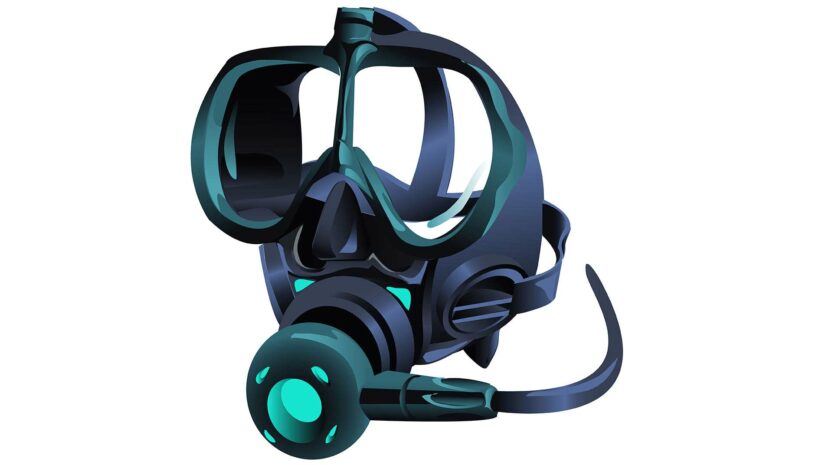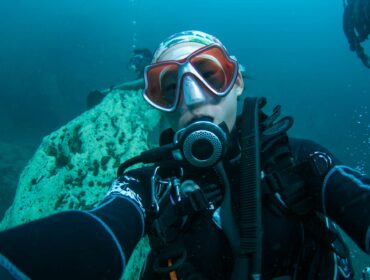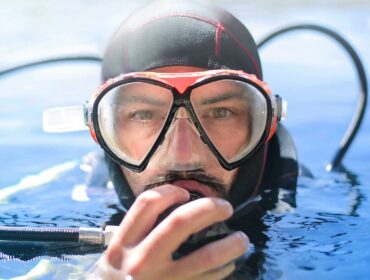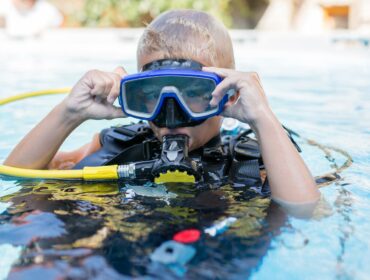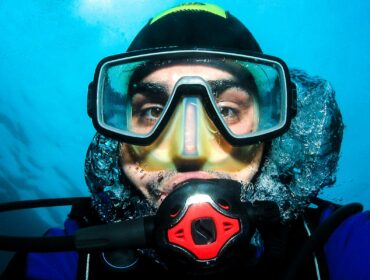You may not see full face scuba masks (FFMs) a lot on recreational divers, but you might be able to see them on professional and serious cold water divers who need extra thermal protection on their faces. This type of mask is also commonly used by commercial divers, as well as by underwater videographers and TV show hosts, as it can be fitted with intercom radio units or other communication devices that allow divers to record or broadcast their voices and communicate with other divers.
Here’s a closer look at full face scuba masks, what makes them different from regular scuba masks, and what to look for when choosing a full face dive mask for your underwater adventures.
Full Face Diving Mask vs. Regular Scuba Mask
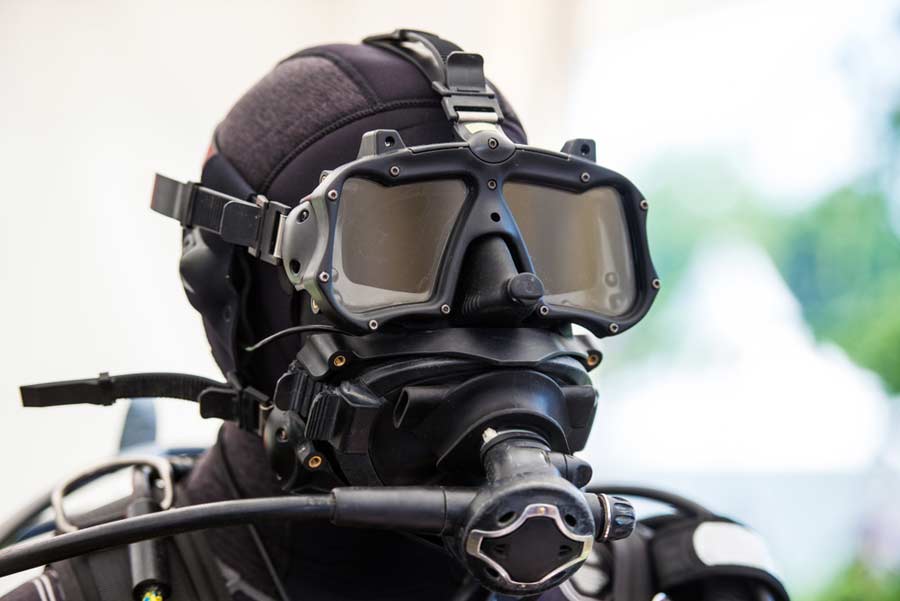
Just like full face snorkel masks, full face scuba masks completely seal the diver’s face from the water. The mask also features a mouthpiece that allows the diver to breathe and speak normally inside the mask. This is made possible by the direct connection of the full face masks (FFMs) to the second stage regulator, as opposed to having to bite onto the regulator mouthpiece with your teeth. As you can imagine, there is a higher comfort level with breathing through a full face mask as compared to a traditional mask and regulator.
FFMs are obviously bigger and heavier than conventional scuba masks. They require special training prior to use, although they are technically much easier to use as straps can be secured around the head to eliminate the chances of it coming off and cutting off your air supply. The seals around the entire face are also pretty airtight so there’s a much lower risk of water leakage during a dive. This airtight feature is what permits the proper use of communication equipment inside the mask, such as with Ocean Reef’s Neptune Space G. Diver Full Face Mask.
Because of all the added material used to create the product, full face dive masks can be three to four times more expensive than half mask models, which makes it all the more important to know what you’re buying before you choose to invest in one.
Choosing a Full Face Mask

Consider the type of diving you intend to do
Before you start checking out scuba diving full face masks online or at brick-and-mortar stores, it’s important to consider what type of diving you intend on using the mask for.
For simple cold water diving, you’re just looking for basic protection from the water coming into contact with your face. If you’re looking to communicate underwater as they nowadays do for underwater weddings, there are full face scuba masks with communications features. These come fitted with basic underwater transceiver units or more advanced communication systems.
Bonus Tip: The Ocean Reef specializes in masks with the latest and most innovative underwater communication units included, such as the Ocean Reef Neptune Space G. Diver Full Face Mask with Coms. This brand even caters to commercial divers with masks featuring shield displays and visor lights.
Look for recommended brands
It’s always a bad idea to skimp on quality when you’re shopping for gear that your life will depend on. It’s better to invest in a product that has undergone years of improvement but is also sure to last years of use, as opposed to a third-party copycat brand that has never been officially tested for product efficiency.
Fortunately, there are a lot of trusted brands that produce reliable full-face diving masks today. You’ve got Ocean Reef, OTS, Poseidon, Scubapro, Cressi, and other famous manufacturers of scuba gear. To be sure, only shop from certified retailers, if not directly from the brands themselves.
Try on different masks
There are no standard sizes for masks. Therefore, it’s important that you try them on so you can be sure that the mask will fit you well. See which is most comfortable on your face, even while wearing a hood.
To ensure a proper fit even without submerging yourself underwater, nod your head and shake it a little to test if it shifts on your face. You can also gently push upwards on the chin of the mask to check the snugness.
Carefully inspect the mask
If the mask fits well, don’t get too excited yet. Spend a couple more minutes inspecting the silicone material around the mask. This is what’s in charge of keeping the mask securely in place without causing discomfort on your skin, so make sure it’s smooth and that there are no visible gaps. You can do this by wearing the mask and sliding your finger along its outer skirt to check for any gaps between the seal and your face.
While you’re at it, also check the surface air valve located on the side of the mask. Since FFMs don’t allow for snorkel usage, the valve permits surface air breathing.
Test your range of visibility
Finally, before checking out your product, wear the mask and look around. Check your peripheral vision in the mask to ensure that you have a pretty good range of visibility.

